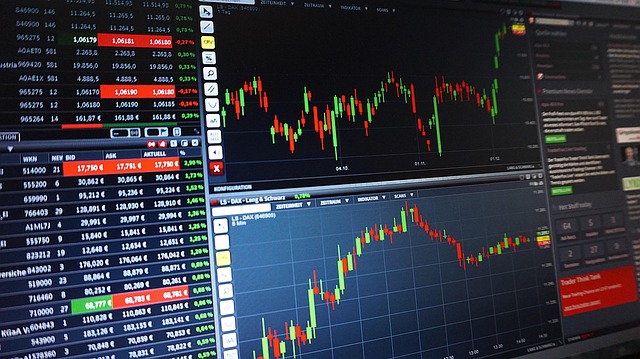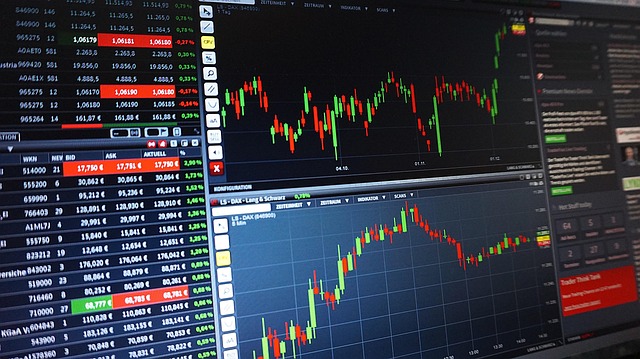Understanding Copy Trading Analysis: A Deep Dive into Strategies for Long-Term Success
Author: Jameson Richman Expert
Published On: 2025-09-01
Prepared by Jameson Richman and our team of experts with over a decade of experience in cryptocurrency and digital asset analysis. Learn more about us.
Copy trading analysis is an essential discipline for traders seeking to build a resilient, scalable, and consistently profitable trading approach in today’s rapidly evolving financial landscape. With the proliferation of digital assets, decentralized finance (DeFi), forex, commodities, and cryptocurrencies, market volatility and complexity have increased exponentially. Consequently, traders must adopt a rigorous analytical framework that evaluates not only performance metrics but also behavioral tendencies, strategic consistency, and adaptability to various market conditions. From my personal journey—marked by initial missteps, iterative learning, and eventual steady growth—I can affirm that a systematic, data-driven approach to analyzing traders and their strategies is indispensable for sustainable success. Combining quantitative analysis with qualitative insights, ongoing education, and behavioral discipline forms the backbone of an effective copy trading methodology.
Copy trading, often referred to as social trading, involves automatically mirroring the trades of experienced traders via specialized digital platforms. Its popularity is driven by technological innovations, democratization of financial markets, and the desire for passive income streams. However, while this approach lowers entry barriers, it introduces unique risks—such as trader misconduct, strategy failures, and market unpredictability—that demand diligent analytical evaluation. Proper assessment of traders’ historical performance, trading styles, risk management practices, and psychological stability can significantly mitigate these risks. Ultimately, a comprehensive copy trading analysis ensures that your capital is allocated to traders demonstrating not only profitability but also resilience, behavioral consistency, and prudent risk controls, aligning with your personal financial goals.

What is Copy Trading Analysis?
At its core, copy trading analysis entails a systematic examination of trader profiles, historical performance data, behavioral patterns, and strategic tendencies to inform your selection process. It goes beyond superficial metrics like total returns or win rates, delving into the underlying factors that contribute to or undermine consistent success. Superficial analysis can be misleading—highlighted by traders who enjoy short-lived spikes in gains yet lack durability over market cycles. A deep analytical approach evaluates trader stability, risk-adjusted metrics, drawdown history, and their ability to respond effectively during high volatility. This comprehensive assessment helps you identify traders who demonstrate disciplined decision-making, adaptability to changing market conditions, and prudent use of leverage—traits that are vital for long-term profitability.
Key Components of Effective Copy Trading Analysis
To develop a robust, resilient copy trading strategy, consider multiple interconnected analytical components:
- Performance Metrics: Look beyond simple return figures. Analyze metrics such as average annualized return, consistency of profits across various market regimes, and the maximum drawdown experienced. Prioritize traders with stable, risk-adjusted gains over a minimum of 6-12 months, which indicate durability and resilience. Incorporate metrics like the Sharpe ratio, Calmar ratio, and Sortino ratio to assess risk-adjusted performance, providing a clearer picture of profitability relative to risk taken.
- Trading Style & Strategy: Understand the specific trading style—scalping, day trading, swing trading, trend-following, algorithmic, or hybrid approaches. Ensure their approach aligns with your risk appetite, time commitment, and financial objectives. Recognize that different strategies have distinct risk profiles, trade frequencies, and performance cycles, which influence their suitability for your portfolio.
- Risk Management & Leverage Usage: Evaluate how traders control risk through position sizing, stop-loss adherence, and leverage management. Disciplined traders often implement strict maximum drawdown limits, diversify their positions, and avoid reckless leverage use, especially during volatile periods. Use risk metrics like the profit factor, maximum drawdown, and the Omega ratio to gauge downside risk relative to returns. Pay particular attention to traders who demonstrate prudent leverage practices, as excessive leverage magnifies losses during downturns.
- Trading Frequency & Behavioral Consistency: High-frequency traders may achieve rapid gains but often face burnout and erratic decision-making, whereas traders with moderate, disciplined activity tend to exhibit strategic stability. Observe whether their trading habits remain consistent across different market conditions and timeframes. Consistency in behavior underpins long-term performance and risk management.
- Market Responsiveness & Adaptability: The capacity to modify strategies during different market phases—bullish, bearish, or sideways—is critical. Traders who employ tactics such as hedging, tactical position adjustments, or switching strategies indicate higher resilience and market awareness. Analyzing their responsiveness to macroeconomic shifts and news events reveals their strategic flexibility and psychological resilience.
For example, I found that traders with steady returns, low maximum drawdowns, and adaptive strategies tend to outperform impulsive traders with sporadic peaks and deep losses. Incorporating risk-adjusted metrics such as the Sharpe ratio, Calmar ratio, and profit factor provides a more nuanced understanding of true performance relative to risk undertaken.
Tools and Platforms for In-Depth Copy Trading Analysis
Modern trading platforms have evolved to provide comprehensive analytical tools that facilitate detailed evaluation of trader performance:
- Binance: Features an extensive analytics dashboard displaying historical returns, trading volumes, risk assessments, behavioral indicators, and risk scores. Its filtering options enable selecting traders based on parameters such as consistency, risk levels, and trading styles. The platform also provides detailed trade history and performance charts, aiding in pattern recognition. Registration is available via this link.
- MEXC: Offers detailed trader profiles, including trading history, risk profiles, and performance comparison tools. Its multi-trader comparison feature allows diversification across strategies and risk levels. Additionally, MEXC provides insights into trader behavior during volatile periods, helping identify resilient traders. Access here: MEXC.
- Bitget: Provides in-depth trader insights, historical data, and strategy summaries. Its intuitive interface supports granular analysis of risk and performance, with features like strategy breakdowns and behavioral analytics. Bitget also offers real-time risk alerts and automatic stop-loss controls for copy traders. Register via this link.
- Bybit: Features advanced analytical tools, including real-time performance summaries, behavioral analytics, and risk alerts. Its risk management options allow setting thresholds to monitor trader activity continuously. Bybit’s platform also integrates macroeconomic news feeds, enabling traders to react swiftly to market-moving events.
Combining these platform insights with technical analysis, fundamental data, and macroeconomic indicators enhances your decision-making process, enabling precise trader selection aligned with your strategic outlook. Employing data visualization tools and regular performance audits can further improve your selection process.

Deep Dive into Trader Profiles and Performance Data
A comprehensive evaluation of trader profiles involves analyzing multiple layers of data:
- Long-Term Performance & Consistency: Focus on traders whose returns are steady and sustainable over 6-12 months, avoiding those with fleeting gains. Examine their maximum drawdowns and recovery times to gauge resilience. Consistency in profit during different market cycles signals robustness.
- Trading Style & Strategy Alignment: Match their approach with your risk tolerance and trading horizon. Conservative traders employing strict risk controls may be preferable for capital preservation, while aggressive traders might suit a higher risk-reward profile.
- Risk Metrics & Downside Exposure: Use metrics such as the maximum drawdown, profit factor, Sharpe ratio, and Sortino ratio to evaluate risk-adjusted performance. Traders with high returns but excessive drawdowns may jeopardize portfolio stability, so balancing return with risk exposure is critical.
- Behavior During Market Turmoil & Drawdowns: Analyze how traders handle adverse conditions—do they cut losses early, adhere to pre-set risk limits, or hold onto losing positions? Discipline during downturns indicates strong psychological resilience and strategic discipline.
For instance, traders who demonstrate consistent discipline—such as reducing position sizes during volatility and adhering to stop-loss rules—are often better at capital preservation and strategic adaptation in turbulent markets, making them more reliable for copying. Conducting periodic behavioral reviews, including stress testing their strategies during simulated market shocks, can further validate their resilience.
Risks, Limitations, and How to Mitigate Them
Despite its advantages, copy trading entails several inherent risks that require careful management:
- Market Volatility & Black Swan Events: Sudden macroeconomic shocks, geopolitical crises, or unexpected news can cause rapid price swings, undermining even the most disciplined traders. Diversification across different asset classes and traders can help dampen these effects.
- Trader Errors & Strategy Flaws: Human traders are susceptible to mistakes, especially under stress or during unpredictable events. Continuous monitoring and employing traders with proven risk management records can mitigate this risk.
- Dependence on Historical Performance: Relying solely on past data ignores evolving market conditions, regime shifts, and structural breaks. Incorporating forward-looking metrics, such as scenario analysis and stress testing, enhances resilience.
- Crowded Trades & Herding Behavior: Following popular traders may lead to overcrowded positions, increased slippage, and liquidity issues. Diversifying across multiple traders with different strategies reduces systemic risk.
- Technological Risks: Connectivity problems, platform outages, or algorithmic failures can cause unintended trade execution or missed opportunities. Using robust, well-established platforms and setting up alerts can prevent major mishaps.
To mitigate these risks, diversify your investments across multiple traders with varying styles and risk levels, set strict copy allocations, and perform regular reviews of performance data. Employ portfolio-level stop-loss orders and consider hybrid strategies combining manual oversight with automated copying. Maintaining an active awareness of macroeconomic developments enhances your capacity to respond proactively.
Integrating Technical and Fundamental Analysis for Better Selection
Enhance your copy trading approach by leveraging technical analysis tools—such as moving averages, RSI, MACD, Fibonacci retracements, and volume metrics—to forecast potential market reversals or continuation patterns. For instance, using RSI divergence signals in conjunction with a trader’s entry points can add confirmation to your copying decisions. Employing pattern recognition and trend analysis enables you to anticipate market turns and select traders whose strategies align with these signals.
Complement this with fundamental analysis, tracking macroeconomic indicators, geopolitical events, earnings reports, central bank policies, and economic data releases. Traders who respond swiftly to news—employing hedging, adjusting stop-loss levels, or switching strategies—tend to demonstrate higher resilience during turbulent markets. Recognizing how fundamental shifts influence market behavior enables more precise trader selection, especially during high-impact news events.
By combining technical signals with fundamental insights, you create a layered analytical framework that reduces false signals, improves timing, and increases the probability of favorable outcomes. Using economic calendars and news aggregators can improve your situational awareness and enable you to adjust copy trade allocations proactively.

Lessons Learned and Strategies for Continuous Improvement
My personal journey with copy trading has been punctuated by valuable lessons—such as the danger of over-reliance on recent profits and neglecting behavioral patterns. These experiences underscored the importance of disciplined, continuous evaluation of traders’ behavior during both calm and turbulent markets. Regularly updating your trader database, conducting performance audits, and setting predefined review intervals—every 1-3 months—are key to maintaining an effective strategy.
Adopting a diversified approach—spreading investments across traders with varying styles, risk levels, and performance histories—has been instrumental. Regularly reviewing performance metrics, adjusting copy allocations based on recent success or failure, and ceasing copying traders who exhibit reckless behavior or deviate from their strategies have significantly improved my overall results. Emphasize ongoing education—attending webinars, reading industry reports, and participating in trading communities—to stay abreast of new techniques and market developments.
Patience, continuous education, and a willingness to learn from both successes and failures are crucial to refining your approach. Maintaining a disciplined re-evaluation process ensures that your strategy adapts to evolving market conditions and personal risk appetite. Keeping a trading journal to document decisions and outcomes further enhances strategic insights and behavioral discipline.
Conclusion: Developing a Strategic and Analytical Mindset for Copy Trading
Achieving sustained success in copy trading hinges on cultivating a disciplined, analytical mindset. This involves comprehensive evaluation of trader profiles, behavioral patterns, strategic consistency, and adaptability—coupled with ongoing learning and market awareness. Leveraging advanced analytical features on platforms such as Binance, MEXC, Bitget, and Bybit empowers traders with detailed insights necessary for informed decision-making. Integrating technical and fundamental analysis tools enhances your ability to select resilient traders aligned with evolving market conditions.
The cornerstone of long-term profitability lies in selecting traders with robust, risk-aware strategies, avoiding herd mentality, and diversifying investments to mitigate exposure to individual trader failures. Recognizing that past performance is not predictive of future results, maintaining a proactive review process, and adapting to market shifts are vital practices. Embracing both successes and setbacks as learning opportunities fosters resilience and strategic growth. Developing an investment philosophy centered on data-driven decision-making and emotional discipline is key to navigating the complexities of copy trading effectively.
If you are committed to this structured, analytical approach, start your journey by registering on trusted platforms using the provided links: Binance, MEXC, Bitget, and Bybit. Employing a disciplined, data-driven mindset will not only enhance your ability to navigate the complexities of copy trading but also significantly improve your prospects for consistent and sustainable trading success.